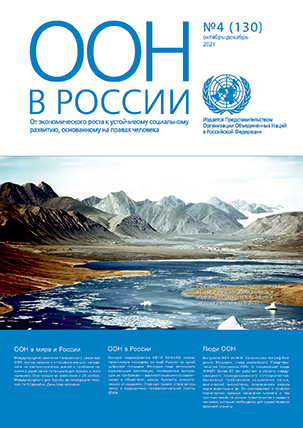Tuberculosis in the WHO European Region - Fact Sheet
Tuberculosis (TB) continues to be a major public health issue in the WHO European Region. Estimates suggest there were around 323 000 new TB cases and 32 000 deaths in the Region in 2015, mostly from eastern and central European countries (Fig. 1).
New TB cases have been falling at an average rate of 4.3% per year over the past five years, which is the fastest decline in the world. Nevertheless, new TB cases were almost eight times higher in high TB priority countries than in the rest of the Region.
One in four new TB patients was not treated successfully in 2015, which is one of the highest rates in the world (Fig. 2).

Drug-resistant TB
The European Region includes nine of the top 30 countries with the highest burden of multidrug-resistant TB (MDR-TB) in the world.a The percentage of MDR-TB among new and previously treated TB cases in 2015 was 16% and 48% respectively.
Around 74 000 people in the Region were estimated to fall ill with drug-resistant TB in 2015. Only 43 000 of them, or one in three, were diagnosed (due to limited access to rapid and quality diagnosis) and commenced treatment. On a positive note, the treatment success rate in drug-resistant TB patients increased sustainably in 2015 compared to 2011, from almost 49% to over 51%, even though it remains far below the 75% target (Fig. 2).1,2
Extensively drug-resistant TB (XDR-TB) remains considerably underreported, but over 2000 XDR-TB cases were detected in MDR-TB patients, meaning one in four MDR-TB patients has XDR-TB. Most cases occur in the MDR-TB high-burden countries.

TB and HIV co-infection
People living with HIV are up to 40 times more likely to develop active TB disease than those without HIV.3 HIV and TB form a deadly combination, each accelerating the other's progress. Reflecting the rapid spread of HIV infection in the Region, HIV co-infection among TB cases increased sharply from 5.5% to 9% between 2011 and 2015. While rapid detection and appropriate treatment are vital, only two thirds of the estimated 27 000 TB/HIV co-infected patients were detected in 2015 and only 36% of them were offered antiretroviral treatment. The treatment success rate in TB/HIV co-infected patients reached its lowest rate of 41% during the last five years.
WHO’s response
The TB action plan for the WHO European Region 2016–2020 is the main instrument for European countries to implement the global End TB Strategy 2016–2035, now aligned with target 3 of the United Nations Sustainable Development Goals on eliminating TB by 2030.Error! Bookmark not defined.2,4,5
The TB action plan, endorsed at the 65th session of the WHO Regional Committee for Europe in 2015, takes stock of achievements driven by the previous plan (2011–2015) and is in line with WHO’s European health policy framework, Health 2020.6,7
Targets in the plan to be achieved by 2020 are:
• 35% reduction in TB deaths
• 25% reduction in new TB cases
• 75% treatment success rate among MDR-TB patients.
Countries are encouraged to reach these targets by providing universal access to person-centred services for prevention, diagnosis and treatment that will contribute to ending the TB epidemic. WHO supports countries by setting norms and standards, providing technical cooperation, fostering partnerships, building capacity, creating and disseminating evidence, and conducting monitoring and evaluation activities.
About TB
TB is a contagious disease that spreads when a person breathes in bacteria in the exhaled breath of an infected person. It is caused mainly by Mycobacterium tuberculosis. One fourth of the world’s population is infected, and a tenth of them become ill with the disease.8
Symptoms differ depending on the area of the body infected. In pulmonary TB, common symptoms include a cough with sputum production (sometimes with blood), shortness of breath and chest pain. People living with HIV or suffering from other conditions that weaken the immune system (such as diabetes) are at much higher risk of developing the disease.
MDR-TB is resistant to two of the most potent anti-TB drugs. This results from inadequate treatment of TB or poor airborne infection control in health-care facilities and congregate settings. XDR-TB is resistant to the main first- and second-line drugs: consequently, chances of cure are very limited.
TB can affect anyone but is most frequently seen among young adults in the eastern part of the European Region, migrants and native populations of older people in western European countries. It is particularly linked to poverty, migration, imprisonment and social marginalization.
a These countries are: Azerbaijan, Belarus, Kazakhstan, Kyrgyzstan, the Republic of Moldova, the Russian Federation, Tajikistan, Ukraine and Uzbekistan.
1 European TB surveillance and monitoring report in Europe 2017. ECDC/WHO 2017. http://www.euro.who.int/en/health-topics/communicable-diseases/tuberculosis/publications/2017/tuberculosis-surveillance-and-monitoring-in-europe-2017
2 Tuberculosis action plan for the WHO European Region 2016–2020. Copenhagen: WHO Regional Office for Europe; 2015 (http://www.euro.who.int/en/about-us/governance/regional-committee-for-eu..., accessed 14 March 2017).
3 Getahun H, Gunneberg C, Granich R, Nunn P. HIV infection-associated tuberculosis: the epidemiology and the response. Clin Infect Dis. 2010; 50(Suppl. 3):S201–7 (https://academic.oup.com/cid/article-lookup/doi/10.1086/651492, accessed 14 March 2017).
4 The end TB strategy. Geneva: World Health Organization; 2014 (http://www.who.int/tb/strategy/en/, accessed 14 March 2017).
5 SDG 3: Ensure healthy lives and promote wellbeing for all at all ages [website]. Geneva: World Health Organization; 2017 (http://www.who.int/sdg/targets/en/, accessed 14 March 2017).
6 Roadmap to prevent and combat drug-resistant tuberculosis. The consolidated action plan to prevent and combat multidrug- and extensively drug-resistant tuberculosis in the WHO European Region 2011–2015. Copenhagen: WHO Regional Office for Europe; 2011 (http://www.euro.who.int/en/health-topics/communicable-diseases/tuberculo..., accessed 14 March 2017).
7 Health 2020: a European policy framework supporting action across government and society for health and well-being. Copenhagen: WHO Regional Office for Europe; 2013 (http://www.euro.who.int/en/health-topics/health-policy/health-2020-the-e..., accessed 14 March 2017).
8 Houben, Rein M. G. J., and Peter J. Dodd. 2016. “The Global Burden of Latent Tuberculosis Infection: A Re-Estimation Using Mathematical Modelling.” PLoS Medicine 13 (10): e1002152. (http://dx.doi.org/10.1371/journal.pmed.1002152, , accessed 14 March 2017).
Copenhagen, March 2017

